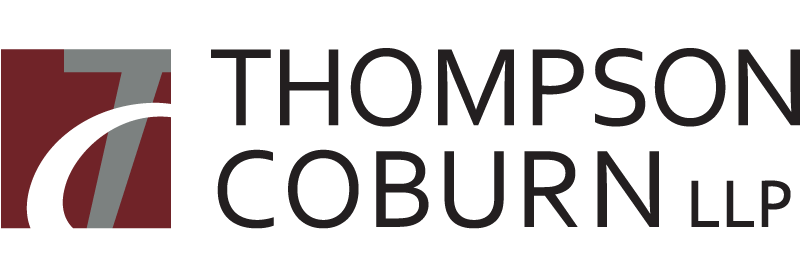Home > Insights > Publications > Common slipups compromising the effectiveness of trusts you have or will create
Whether you have a revocable (a/k/a living or inter vivos) trust or are considering creating one, it is imperative that you take the proper steps to maximize your trust’s (or future trust’s) full potential. Many such steps hinge on trust funding, policy titling, and beneficiary designations, which if neglected, can result in significant amounts of money and time being spent that could have otherwise been avoided. The following are five unwanted results owing to trust funding, policy titling, and beneficiary designation slipups:
Probate court
Probate is a court process intended to administer a decedent’s assets according to the decedent’s direction, if any, and applicable state laws. When a person dies, assets owned by the decedent in his or her individual name without a beneficiary designation are subject to probate. The probate process can be timely and costly. Assets in a trust are generally not subject to probate, and therefore a primary reason people create trusts. However, the mere creation of a trust does not transfer assets into the trust. You must take steps to transfer such assets, which if not taken, will subject your estate to the timely, costly, and public probate court process you sought to avoid by creating a trust in the first place. This process becomes even more costly if a decedent has real property in his or her name in more than one state, which typically requires a probate estate to be opened in each state in which the decedent owned such property.
Guardianship court and reliance on financial powers of attorney
A revocable trust should provide how your assets should be managed and by whom in the event of your disability. However, if your assets are not in your trust, the provisions of the trust will not apply to those assets. Rather, the assets will be managed by a guardian appointed by a court and/or an agent designated under a financial power of attorney, if any. Neither of these alternatives is ideal for two primary reasons. First, it could result in the assets being managed under the supervision of and by a person appointed by a court rather than independently by the person designated in your trust to handle your assets according to the provisions you have prescribed therein. Second, while executing a financial power of attorney is recommended in the event any asset is not transferred to your trust, managing assets in a trust is preferable. Unlike a financial power of attorney, a trust:
(a) Is far more detailed as to how you would like your assets managed in the event of your disability;
(b) Typically provides procedures for removing and replacing designated trustees if necessary; and
(c) Is generally accepted among financial institutions, which increasingly scrutinize powers of attorney and accept only the institution’s power of attorney form.
Unintended beneficiaries of retirement accounts and life insurance policies
A trust, if drafted properly, will contemplate retirement assets, life insurance proceeds, and other accounts and policies with beneficiary designations. If such accounts and policies do not properly designate your trust as a primary or contingent beneficiary, as applicable, then the dispositive provisions of your trust will not dictate the disposition of those assets. This may result in beneficiaries receiving more or less assets than intended and sooner than necessary.
No insurance coverage for your home
If you retitle ownership of a primary residence to the name of your trust, the trust should be named as an insured on your homeowner’s (and umbrella) insurance policy. Even if you do not retitle your primary residence into the name of your trust (perhaps it is held as tenants by the entirety), your trust should still be a named insured since you transferred (or should transfer) your tangible personal property into your trust. If your trust is not a named insured, the insurance company may assert your home, property therein, or both, as the case may be, is not covered by the policy since the trust – not you – owns the property and is not an insured. Your trust, as well as you (and perhaps even your spouse and your spouse’s trust, as applicable), should therefore be a named insured. In all events, it is imperative to make sure that the policy covers entities such as trusts, since even if your trust is a named insured, the policy issuer may not cover a claim if the policy does not provide coverage to trusts.
Unnecessary capital gains and state estate taxes
On January 1, 2018, the most significant changes to the U.S. Tax code in over 30 years took effect, nearly doubling the federal estate tax exemption amount to what is now $11,400,000 per person (nearly $23,000,000 per married couple). However, the tax reform did not change all state estate tax exemptions. In Illinois, for example, the state estate tax exemption continues to be $4,000,000. Older documents that create a “marital trust” and a “bypass” (a/k/a “credit shelter” or “family”) trust may have a funding formula that can result in state estate tax being owed upon the death of the first spouse to die that otherwise could be deferred or avoided. These funding formulas also might result in capital gains tax upon the first spouse’s death that could otherwise be avoided or that may prevent a step-up in basis in some assets when the surviving spouse dies. Further, if you are married, live in a state like Illinois that has a state estate tax, and you have not funded both spouses’ trusts, upon the death of the first spouse, you may be wasting his or her Illinois estate tax exemption and causing additional state estate tax to be owed upon the death of the surviving spouse that could have been avoided.
Conclusion
Trust funding, policy titling, and beneficiary designations are an integral part of estate planning that are often left unattended. Consequently, upon disability or death, a trust may not accomplish the very things you spent time addressing when creating the trust, resulting in added time and cost that could have been avoided. Capitalize on the time and money you have already spent (or will be spending) creating your trust, and avoid the undesirable results above.
Sarah J. Chang counsels individuals, families, and business owners in developing comprehensive estate plans through the use of wills, trusts, powers of attorney, and gifting strategies.

